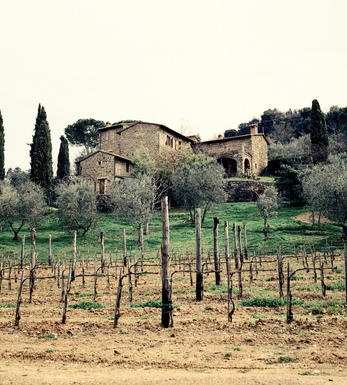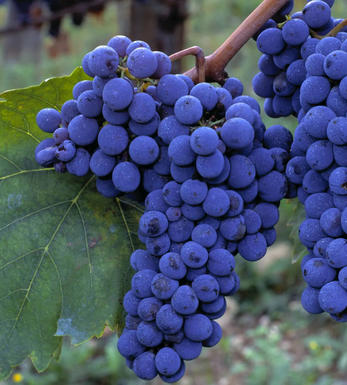
Critics reviews
Monica Larner - 31/05/2019
Walter Speller, Jancis Robinson, jancisrobinson.com, 31 Oct 2012.
About this WINE

Caiarossa, Tuscany
Caiarossa, situated in the heart of the Val di Cecina, on the Tuscan coast. The winery was founded in 1998 and it was eventually acquired in 2004 by Eric Albada Jelgersma, a Dutch entrepreneur with a great passion for wine and also the owner of Château Giscours and Château du Tertre - two Grand Crus classé in Margaux, Bordeaux.
From the beginning of 1998, an effort was made to discover the potential of this terrain through careful geological analysis. The results revealed an extremely varied soil. This diversity led to the definition of 12 vineyard lots, depending on the soil type, which were then planted with the most suitable grape varieties.
Biodynamics reign in the vineyard and there are currently 11 grape varieties planted: Sangiovese, Merlot, Cabernet Franc, Cabernet Sauvignon, Petit Verdot, Syrah, Grenache, Mourvèdre for the reds; Chardonnay, Viognier and Petit Manseng for the whites.
There are currently two Caiarossa wines, both IGT Tuscan reds, with the first year being 2002. The top wine is Caiarossa (a cuvée of the best grapes of the year), the second wine is Pergolaia, and is predominantely Sangiovese, in keeping with the region's winemaking tradition.
The wines are allowed to age in a mixture of barriques, tonneaux and large oak casks. Only a small percentage (35%) of new oak is used for Caiarossa, whilst Pergolaia ages in two years old barriques. The idea is not to hide the personality of the wine behind wood, but rather, to let it express its natural characteristics and flavours.

IGT Tuscany
IGT (Indicazione Geografica Tipica) Tuscany is a wine classification from Italy's Tuscany region. It is one of the official wine classifications recognized by the Italian government. IGT is a step below the highest classification, DOCG (Denominazione di Origine Controllata e Garantita), and above the DOC (Denominazione di Origine Controllata) level.
The IGT classification was introduced in 1992 to allow winemakers more flexibility in grape varieties and employ winemaking techniques while still ensuring a certain level of quality and geographical indication. This classification gives winemakers more freedom to experiment and innovate, deviating from the strict regulations of the DOC and DOCG classifications.
IGT Tuscany wines can be produced throughout the entire region of Tuscany, encompassing various sub-regions and terroirs within the area. This classification allows winemakers to use traditional Tuscan grape varieties, such as Sangiovese, and non-traditional grape varieties, including international ones like Cabernet Sauvignon, Merlot, Syrah, and others.
The IGT Tuscany classification gives winemakers the flexibility to create wines that showcase the unique characteristics of their specific vineyards and winemaking styles. It allows for experimentation with blending different grape varieties, using innovative winemaking techniques, and exploring new regional vineyard sites.
IGT Tuscany wines can vary greatly, from traditional and terroir-driven expressions to more modern and international styles. This classification has played a significant role in developing Super Tuscan wines, often IGT designated and known for their high quality and international recognition.
Overall, IGT Tuscany provides a platform for winemakers in the region to express their creativity and produce wines that reflect their unique vision while maintaining a connection to the rich heritage and traditions of winemaking in Tuscany.

Sangiovese & Merlot
Sangiovese and Merlot blends are especially common in the wine region of Tuscany, where they represent a modern twist of the Chianti blend under the Toscana IGT. This blend is also finding its feet in Australia and Claifornia.
Sangiovese
A black grape widely grown in Central Italy and the main component of Chianti and Vino Nobile di Montepulciano as well as being the sole permitted grape for the famed Brunello di Montalcino.
It is a high yielding, late ripening grape that performs best on well-drained calcareous soils on south-facing hillsides. For years it was blighted by poor clonal selection and massive overcropping - however since the 1980s the quality of Sangiovese-based wines has rocketed upwards and they are now some of the most sought after in the world.
It produces wines with pronounced tannins and acidity, though not always with great depth of colour, and its character can vary from farmyard/leather nuances through to essence of red cherries and plums
Merlot
The most widely planted grape in Bordeaux and a grape that has been on a relentless expansion drive throughout the world in the last decade. Merlot is adaptable to most soils and is relatively simple to cultivate. It is a vigorous naturally high yielding grape that requires savage pruning - over-cropped Merlot-based wines are dilute and bland. It is also vital to pick at optimum ripeness as Merlot can quickly lose its varietal characteristics if harvested overripe.
In St Emilion and Pomerol it withstands the moist clay rich soils far better than Cabernet grapes, and at it best produces opulently rich, plummy clarets with succulent fruitcake-like nuances. Le Pin, Pétrus and Clinet are examples of hedonistically rich Merlot wines at their very best. It also plays a key supporting role in filling out the middle palate of the Cabernet-dominated wines of the Médoc and Graves.
Merlot is now grown in virtually all wine growing countries and is particularly successful in California, Chile and Northern Italy.



Buying options
Add to wishlist
Description
Compared to the sunny Sangiovese dominated blend under the Pergolaia label, the flagship Caiarossa wine is effectively a Mediterranean example produced on the Bordeaux theme. It comprises Cabernet Franc (29%), Merlot (16%), Petit Verdot (16%), Syrah (14%), Alicante (14%) and small amounts of Cabernet Sauvignon and Sangiovese. A product of 100% estate grown, biodynamic and hand-picked vines, winemaker Dominique Génot works hard to harvest and vinify the many different varieties separately and in doing so achieves a better understanding of the raw materials he has at his disposal. This 2008 is another fine vintage for the wine, being focused, fleshy and refined.
David Berry Green
wine at a glance
Delivery and quality guarantee